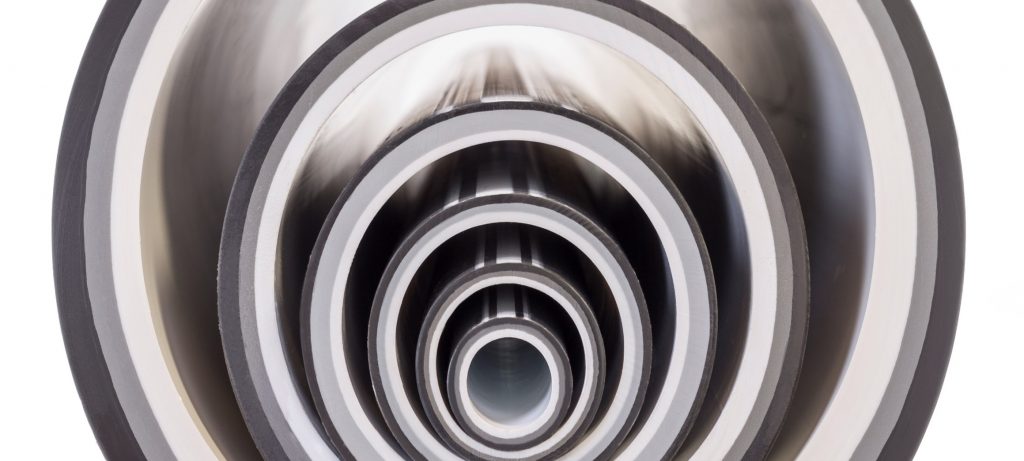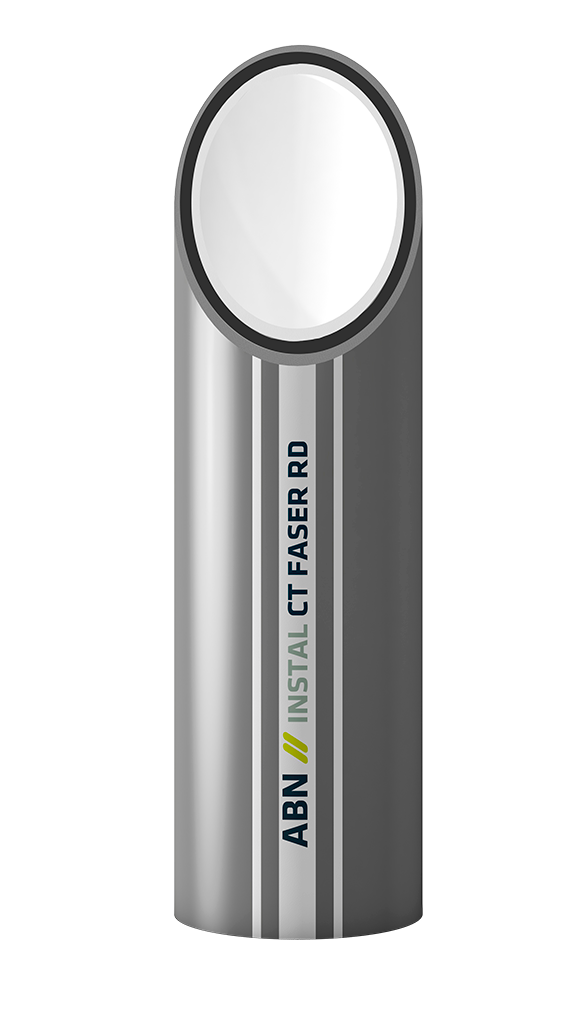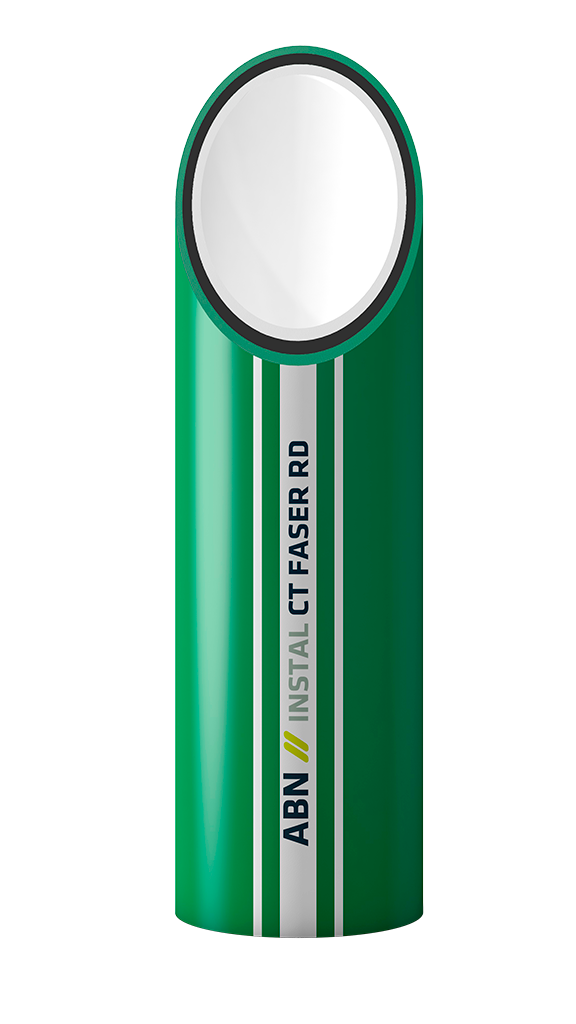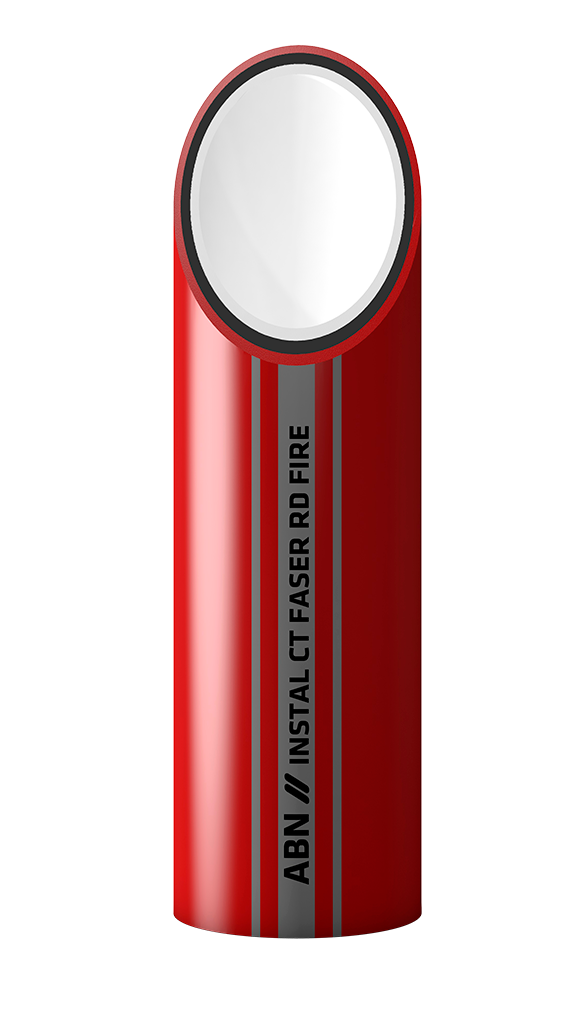Tuberías con barrera al oxígeno
Diseñando y fabricando sistemas innovadores que aporten valor añadido, garantizando un futuro sostenible.

Las tuberías plásticas y el oxígeno
Los sistemas de tuberías plásticos tienen como característica un cierto grado de permeabilidad a gases.
Los plásticos, formados por moléculas de hidrocarburos muy largas entrelazadas entre sí, presentan hendiduras en toda su estructura física. Su tamaño permite el paso de moléculas de oxígeno, de manera que un tubo plástico expuesto a la atmosfera está sujeto a la difusión del oxígeno del aire desde el exterior hacia el interior. Esta permeabilidad varía en función de las condiciones de la instalación (temperatura y presión).

¿Qué problemas existen en los circuitos cerrados?
Las averías o fallos de las instalaciones cuyo fluido es el agua están provocadas por varios fenómenos bien conocidos por los profesionales del sector:
Oxidación de los componentes
Formación de lodo (magnetita)
Formación de biofilm
La problemática actual de los sistemas con barrera al oxígeno
Los sistemas actuales con barrera anti-oxígeno mediante EVOH o aluminio presentan los siguientes inconvenientes:
En los sistemas de PPR es necesario retirar la capa barrera para realizar la soldadura.
El producto deja de ser reciclable y sostenible.
Barrera anti-oxígeno ABN
Nuestros sistemas de tuberías con impermeabilidad al oxígeno mantienen la reciclabilidad y sostenibilidad al no incluir capas adicionales.
Esta nueva solución ofrece 2 ventajas principales:
No es necesario realizar procesos de eliminación de capas para realizar la soldadura.
El producto mantiene su reciclabilidad y sostenibilidad.
Productos ABN con barrera anti-oxígeno:
La mayor gama de diámetros. ¡De 20 a 500 mm!
ENSAYOS
Estos sistemas han sido sometidos al Ensayo de Permeabilidad al oxígeno, según norma DIN 4726, en el laboratorio alemán MPA NRW, obteniendo unos resultados excelentes.
Los tubos han sido ensayados a 40 ºC y a 80 ºC.
Ensayo de permeabilidad al oxígeno
| TEMPERATURA ºC | ABN// INSTAL CT FASER RD | NORMA DIN 4726 |
|---|---|---|
| 40 ºC | <0,004 mg/m2.d | 0,32 mg/m2.d |
| 80 ºC | 1,955 mg/m2.d | 3,6 mg/m2.d |
Ensayos MPA NRW
Qué nos diferencia
Sin capa EVOH
Sin capa EVOH (etylen-vinyl-glycol), por lo que pueden ser soldadas por cualquier procedimiento sin tener que retirarla.
Sin aluminio
Al no ser necesario retirar la capa de aluminio, se evitan posibles fallos en el proceso de soldadura.
Mantenemos la reciclabilidad
Al no contener ni capa EVOH ni aluminio ni adhesivos, se mantiene su reciclabilidad.
¿Qué ventajas aportamos?
Evita la formación de lodos, fangos y bacterias
El oxígeno en el interior de los circuitos hidráulicos provoca la formación de lodos, fangos y bacterias, causando daños en otros componentes de la instalación, como válvulas, filtros, calderas, etc.
Aumenta el rendimiento y la eficiencia
La corrosión del agua (formación de lodos), origina un aumento del consumo energético.
Mantiene la reciclabilidad
A diferencia de otras tuberías del mercado, al no llevar capa EVOH, ni capa de Alumino, se puede reciclar al 100%.
Evita la inversión en herramientas específicas
En estos sistemas al no existir una capa barrera física no es necesario el uso de herramientas específicas para su eliminación.
Reducción de procesos y de mano de obra
Se elimina el tiempo necesario para retirar las capas EVOH o de aluminio.
Evita posibles errores en el proceso de soldadura
Se evita tanto el pelado en exceso como el no retirar la capa barrera, asegurando la termofusión.
Lugares de aplicación
Calefacción
Climatización
Geotermia
Contra incendios


